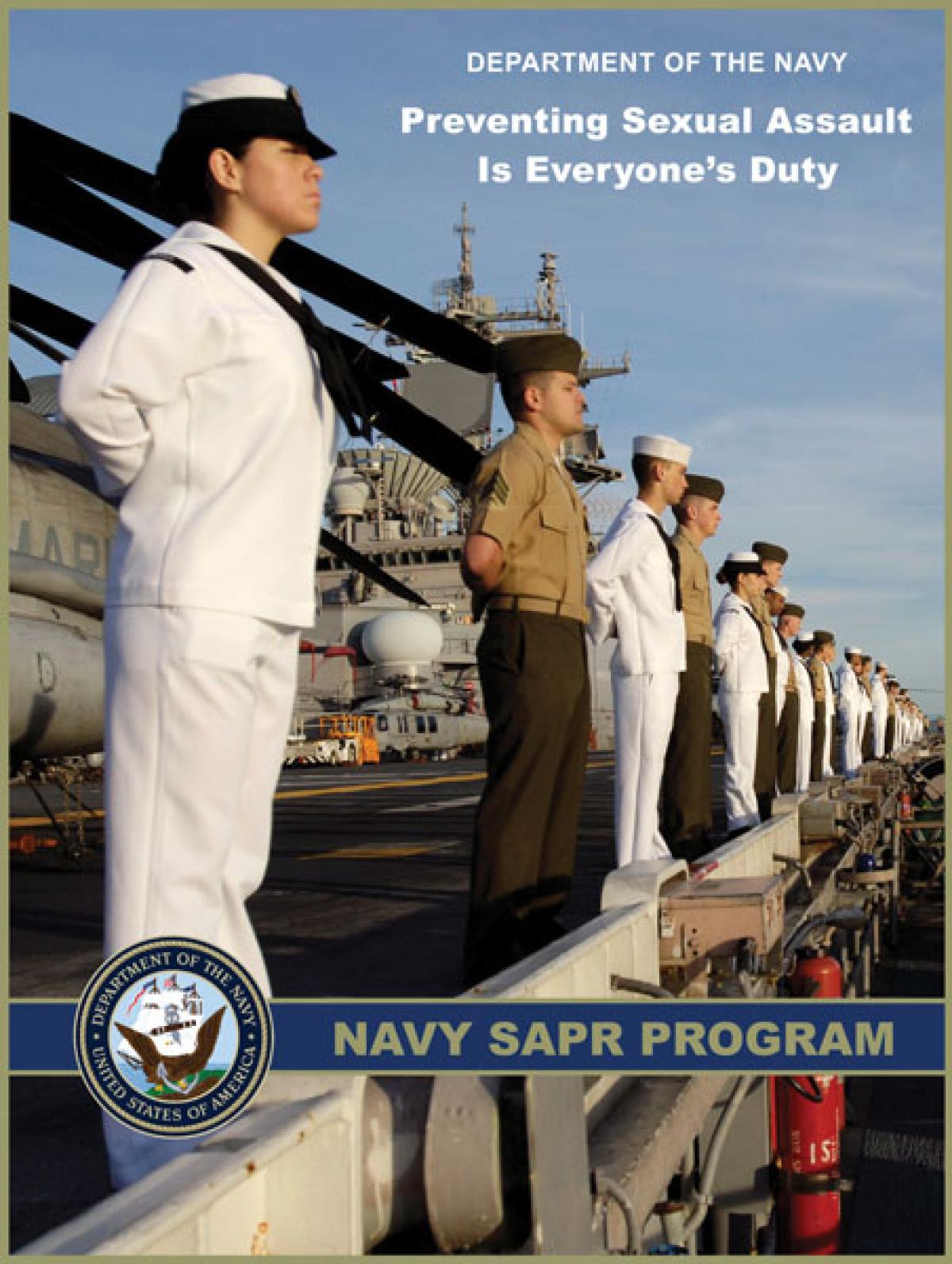We must put an end to sexual assaults against our shipmates. Department of Defense and Navy leaders deserve credit for highlighting these serious offenses and their impact on victims and readiness. But more must be done.
The new Sexual Assault Prevention and Response program, an update to the previous Sexual Assault Victim Intervention program, is a step in the right direction. The first mission listed on the program’s website (www.sapr.mil) is “prevention through training and education programs.” That is a worthwhile goal, but this objective and including the word “prevention” in the title do not address root causes of sexual assault or identify potential perpetrators.
DOD’s Sexual Assault Prevention and Response Office (SAPRO), the agency responsible for the armed forces’ programs, should commission a study to determine commonalities among past sexual offenders to prevent individuals with those attributes from joining the military. We already know that many assaults involve alcohol use (by perpetrators and victims), but other factors may be common among the criminals who already have committed these acts.
Relevant data should include background information that might guide recruiting policies to restrict the enlistment of individuals with identified attributes. These may include any number of factors, including education level and mental group. Recruiting mental groups are a combination of pre-enlistment education and Armed Service Vocational Aptitude Battery scores. There are four main groups, CAT I reflecting the brightest applicants and CAT IV being the least qualified. Another factor is pre-enlistment conduct. Do perpetrators have a higher instance of enlistment waivers for past criminal activity, drug or alcohol use, or other serious behavior issues?
If, for instance, research indicates that the majority of sexual offenders enlisted as CAT IV applicants with a history of underage drinking and at least one behavior waiver, the services could restrict enlistments with that combination of attributes. What we learn from the data could help reduce the number of potential sexual criminals, with a goal of eliminating this crime from our services.
There are two other missions of the DOD SAPRO: treatment and support of victims, and system accountability. These, too, are honorable goals deserving of attention, but they fail to address another important aspect of any program seeking to reduce criminal behavior—punishment.
Whenever possible, the military justice system must punish sexual offenders as seriously as appropriate. This is difficult because of the reluctance of, and impact on, victims, but it’s an important part of reducing crime. According to the Naval Clemency and Parole Board, sailors and Marines have a significantly lower recidivism rate than civilians—14 percent versus 48 percent in 2006 (www.donhq.navy.mil/corb/ncpbfaq.htm)—so prison is not only a suitable punishment but also potentially very effective.
In conjunction with punishment, SAPR objectives should, but fail to, address rehabilitation. Make no mistake, the criminals who commit sexual assaults, whether against shipmates or others, do not deserve the honor and privilege of serving in uniform, but we cannot simply punish and discharge them. We have a duty to rehabilitate them when possible to avoid putting them back into American society without treatment. It is irresponsible to do otherwise.
Since sexual assaults are often handled through non-judicial punishment, many perpetrators have not been found guilty in a court of law and are therefore not subjected to the requirements of sex-offender registries. Rehabilitation is essential since many perpetrators will be outside civilian monitoring and prevention programs.
In a 4 May Navy News article by Mass Communications Specialist First Class Christine Hannon about a recent Navy Sexual Assault Prevention Summit, Vice Chief of Naval Operations Admiral Jonathan Greenert was quoted as saying that “our focus should shift to prevention.” He’s absolutely correct, but prevention without focusing on perpetrators is a failing endeavor. His belief that eliminating sexual assaults “will be resolved by leadership—at the unit level” may be true, but this issue is obviously larger than any individual command, and DOD must address it aggressively.
Preventing and ultimately eliminating sexual assaults is going to take new initiatives focusing on the causes of these crimes, which lie within the offenders. Identifying shared character traits to limit potential perpetrators’ entry into military service, and punishing and rehabilitating offenders appropriately, must be part of the solution.
Enough already!



